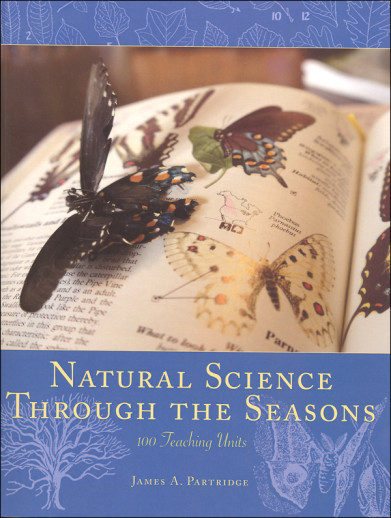We use cookies to make your experience better. To comply with the new e-Privacy directive, we need to ask for your consent to set the cookies. Learn more.
Natural Science Through the Seasons
The study of science begins with an appreciation of the world about us - the living, breathing creation that is ours to enjoy. The beauty of our natural world surrounds us. It encompasses the rising sun in the early morn, overflows the river beds, and spans the wings of eagles. Teaching our children to appreciate the beauty and the science of their natural world is a goal worthy of the consideration of parents and teachers alike.
This charming 1950s reprint has been designed to assist you in teaching the natural sciences. Offering 100 lessons that follow a traditional monthly school schedule, September through June, each lesson begins with an overview, explanatory information, and any necessary teacher preparations. The activities that follow provide the core of the lessons. Activities are divided into four areas: All Grades (1-8); Primary Grades (1-3); Intermediate Grades (3-5) and Junior Grades (5-8). Overlapping grade recommendations are numerous, making this a perfect resource for homeschool families and multi-level co-ops or classrooms. A listing of recommended books and web links is included to further expand lessons. A sampling of lessons included are: Animal life in the classroom, Birds going South, Autumn colors, planting bulbs, Insects-friends and foes in Autumn; How Plants/Animals prepare for Winter; Stars in December; Winter Habits of Some Wild Mammals; Who Has Seen the Wind?; Classroom Hatcheries; Nature Excursions in the Spring; and many more! Also included are monthly calendars which correspond to each unit and provide additional observations and activities.
Let me share from Lesson 61 - Little Things We Seldom See-Germs: "What a thrill to the Dutch janitor Leeuwenhoek when, with lenses ground by himself, he saw 'wee beasties-a thousand times smaller than a louse's eye' in a drop of water! What he saw were the first bacteria seen by human eyes. These tiny, living things eat and grow, travel and multiply, and live lives as real as those of any other plants or animals. They live in almost every sort of place: in water, in soil, in air, on dust, in milk and other food, in and on our bodies; we cannot escape them" Activity suggestions for all grade reinforces that germs hitchhike on drops of saliva, the breath, handkerchiefs, pencils etc. and asks students to make a mural entitled, "Little Hitchhikers." A Primary and Junior Grade activity is to illustrate a poem on germs. Junior and Intermediate Grade activities include: Observing raw milk and pasteurized milk for a few days to determine which milk sours first and reading a poem entitled, "Mushroom Song."
All in all, this resource provides a wealth of instructional information to engage children in learning about the natural world around them. Lessons are easy to follow and provide ample activity suggestions, allowing you to do them all or to pick and choose activities to best meet your educational goals. As a family who incorporated nature studies throughout our home-learning, this would have quickly become a "go-to" resource, along with the Handbook of Nature Study by Anna Comstock, as the lessons are more specific to younger and middle school children along with more age-appropriate activities. Black and White Illustrations abound. Detailed Index. 445 pgs, pb. ~Deanne
| Product Format: | Paperback |
|---|---|
| Brand: | Hillside Education |
| Author: | James A. Partridge |
| Grades: | 1-8 |
| ISBN: | 9780983180098 |
| Length in Inches: | 11 |
| Width in Inches: | 8.5 |
| Height in Inches: | 1 |
| Weight in Pounds: | 2.5 |

